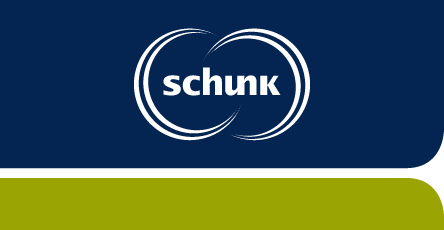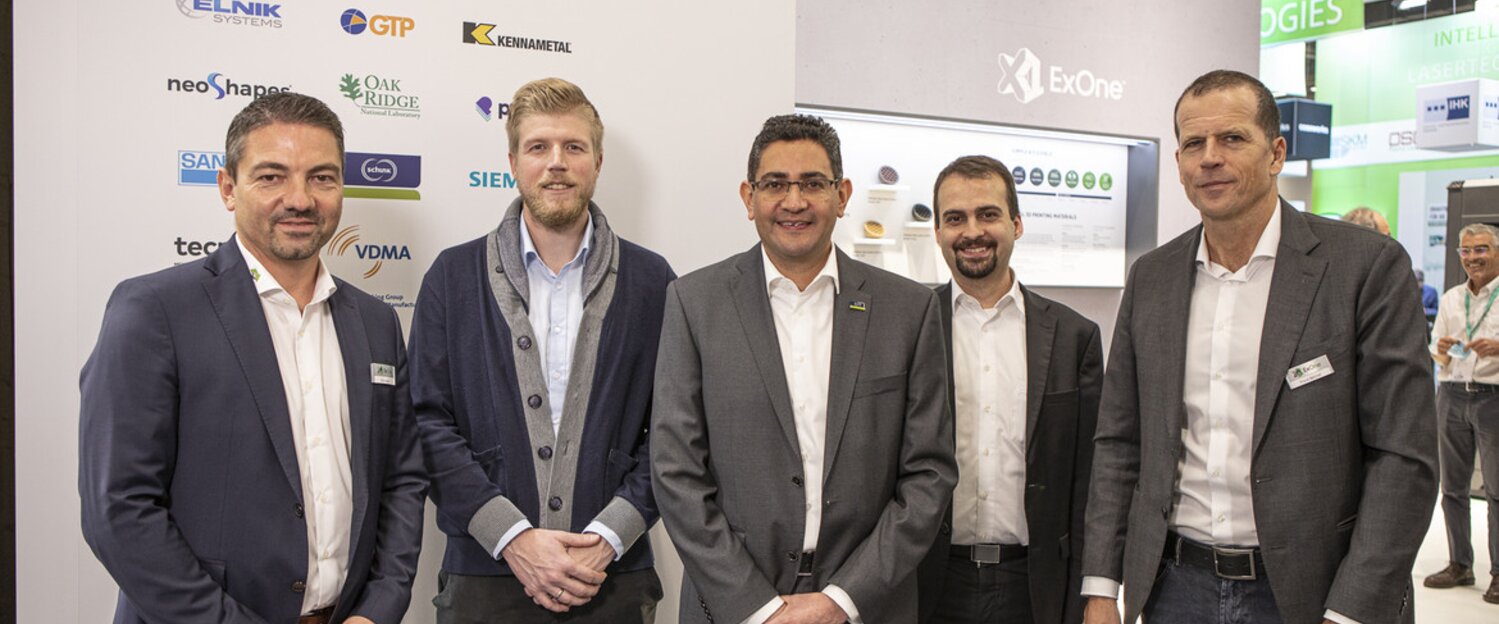In the future, Schunk will rely on 3D printing technology from leading equipment manufacturer ExOne. The materials specialist is thus supplementing its series production of sintered components with an innovative shaping process. Depending on the component, application and quantity, customers can then choose between three processes: Axial pressing, metal powder injection molding and - brand new: 3D printing with Metal Binder Jetting technology.
"If we still want to be an attractive development partner tomorrow, we have to use and further develop technologies that move our customers forward. We can no longer do this with our existing sintered metal components for combustion engines alone," says Global Account Manager Tobias Heusel, explaining the challenge facing Schunk Sinter Metals at the Thale site. "That's why we want to integrate innovative 3D printing technologies into our existing series production and open up new applications and markets with new products."
So far, Schunk has been producing in Thale with two series technologies, axial pressing and metal powder injection molding, producing quantities starting at 100,000 units. Customers from the automotive and aerospace industries have relied on the extensive materials expertise of the company, which is equipped with an accredited testing laboratory, for many years.
With the increasing move away from the traditional internal combustion engine and the shift to new types of drive, production quantities may vary. The aim is therefore to act more flexibly in testing and production with new equipment and by using existing series equipment and facilities, and to be able to produce new geometries for any type of drive.
How customers benefit from Metal Binder Jetting technology in high-volume production
To achieve this goal, Schunk will be relying on cooperation with ExOne in the future. The company is a global leader in the manufacture of 3D printing systems with binder jetting technology, an additive manufacturing process in which the metal powder is bonded together using a binder. The result is a very fast printing process that requires no support geometry and utilizes the entire installation space. As a result, more components are produced in less time compared to laser melting.
Schunk sees four advantages in this for its customers:
1. Low cost: Metal Binder Jetting is up to 100 times faster and therefore much more cost efficient than other 3D printing processes.
2. High volumes: Metal Binder Jetting is fast and cost-effective enough to be used to produce high volumes.
3. Design freedom: even complex geometries, such as undercuts, can be realized with the 3D printing process. Cost-intensive reworking is eliminated due to near-net-shape manufacturing. Design changes are possible without tooling costs.
4. Large selection of materials: With this technology and its materials expertise, Schunk can use the same materials that are already used in series production. The selection includes: Copper, copper alloys, stainless steel, low-alloy steel, tool steel, and nickel- and cobalt-based alloys.
"The combination of our strength in binder jetting and Schunk's extremely sound understanding of powder metallurgy and sintering experience creates exactly the intersection that is needed to be a sustainable partner and supplier to future customers together. It takes a fair amount of vision to enter 3D printing here and now. Schunk is clearly demonstrating its commitment to new developments," says Eric Bader, Managing Director ExOne GmbH, about the potential of the collaboration.
For Daniel Alfonso, Global Business Development Manager Metal Additive Manufacturing at Schunk, the advantages of this cooperation are also obvious: "The cooperation with ExOne results from the increasing demand for the still young metal 3D printing technology. By bringing together different players in the supply chain of this market, we will be able to accelerate developments and further refine this innovative technology. And what better way to do that than with two industry leaders like Schunk and ExOne joining forces to provide viable solutions to our customers' needs?"
Even very small series and prototypes can be printed
In principle, Schunk is not entering new territory when it comes to 3D printing. As a materials specialist, the company already deals with the topic in various areas. Be it with the 3D printing of ceramic materials or fiber composites. Synergy effects are exploited and experience exchanged within the Group.
The company is also already working with 3D metal printing in sintering technology. On the one hand, in cooperation with Volkswagen. On the other, Schunk has been integrating the 3D printing technology Composite Extrusion Modeling (CEM) into metal powder injection molding series production for prototypes and very small series for several months. Here, the printing process replaces injection molding with CEM shaping.
3D printing creates new perspectives
"We see ourselves as a development partner for our customers. Regardless of whether a 3D-printing or one of the conventional shaping processes is most suitable for meeting their requirements, we accompany our customers from the first component inquiry to the finished product. In the process, they always benefit from high quality through lean and stable processes," says Tobias Heusel.
In the future, Schunk will continue to focus on markets such as automotive and aerospace. In addition, it is assumed that 3D printing will bring very great flexibility in the future and thus the possibility of producing complex components for a wide range of industries. There is already interest from a machine manufacturer, for example, but components for the consumer sector, for white goods or the medical industry are also conceivable.
About ExOne
ExOne (Nasdaq: XONE) is the pioneer and global leader in binder jet 3D printing technology. Since 1995, we’ve been on a mission to deliver powerful 3D printers that solve the toughest problems and enable world-changing innovations. Our 3D printing systems quickly transform powder materials — including metals, ceramics, composites and sand — into precision parts, metalcasting molds and cores, and innovative tooling solutions. Industrial customers use our technology to save time and money, reduce waste, improve their manufacturing flexibility, and deliver designs and products that were once impossible. As home to the world’s leading team of binder jetting experts, ExOne also provides specialized 3D printing services, including on-demand production of mission-critical parts, as well as engineering and design consulting. Learn more about ExOne at www.exone.com or on Twitter at @ExOneCo. We invite you to join with us to #MakeMetalGreen™.

